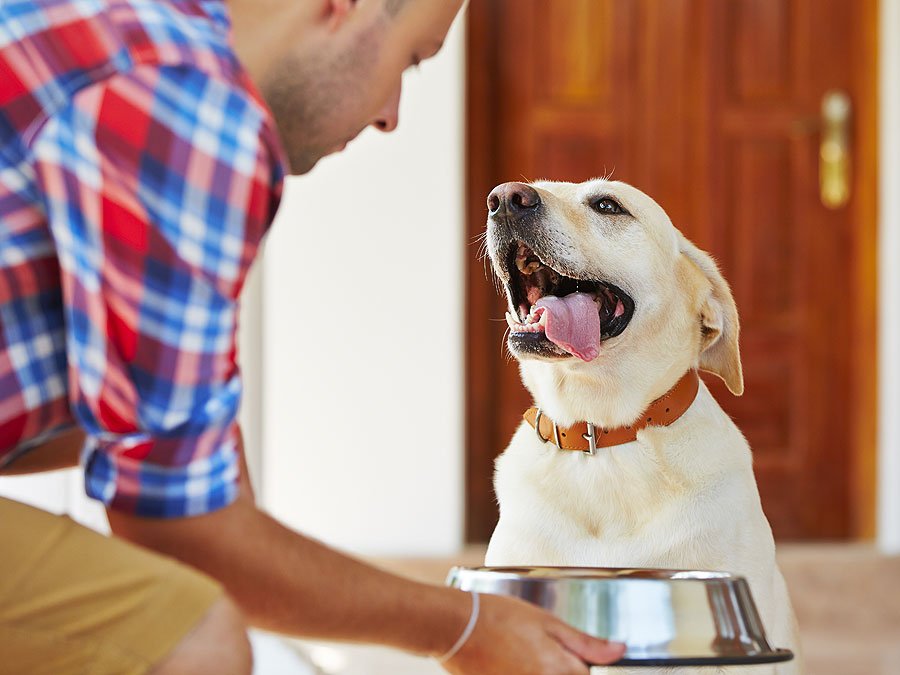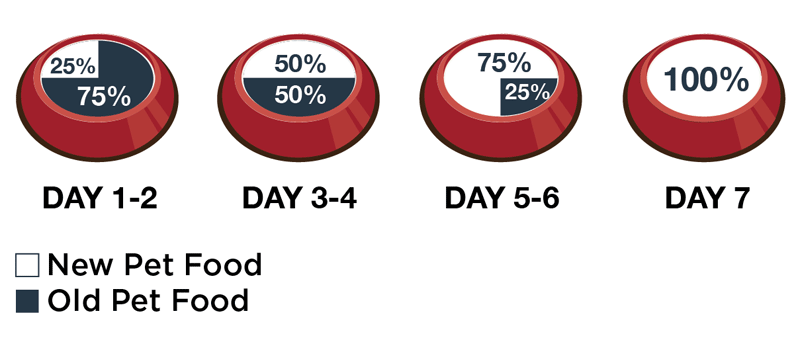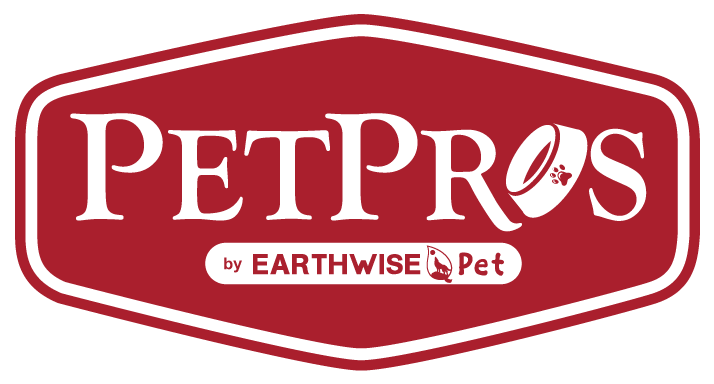
As a pet parent, you may find yourself in the position of needing to switch pet foods for any number of reasons. Perhaps it’s time to switch from puppy to adult food or from adult to mature food. Or maybe you’ve decided you want to switch to a healthier food. Rotating your pet’s diet on a regular basis is actually a good idea. You wouldn’t want to eat the same food over and over again – and neither does your pet! Here are a few other reasons it’s good to switch it up – as well as 4 steps to follow to ensure a smooth transition.
Out with the old – in with the newNo one dietary formula, no matter how “complete and balanced” it is, can meet all of an animal’s nutritional needs over an extended period. For optimal health, rotating between at least three different protein sources is ideal. This helps prevent food sensitivities and improves gut health – as well as providing your pet with some much-appreciated variety in his or her diet.
Ready to rotate?As you are getting down to the bottom 25% of your current bag of kibble, go get the next bag – don’t wait until you are almost out! Then, follow these 4 steps to make a smooth transition from the old to the new.
1. Transition slowly.The smoothest transition from one pet food to another is to gradually mix the foods together. It is generally recommended to have a 5 to 7-day transition period before feeding the new food exclusively. You can extend the transition time if your dog or cat is particularly sensitive to menu changes. This allows the pet’s digestive system to smoothly adapt to the new food. Too much of a new food too quickly can cause upset stomach, diarrhea, vomiting, excess gas or constipation.
2. Mix the new food thoroughly with the old food.This way, your pet will be encouraged to eat both foods rather than leaving the new (or old) in the bottom of the bowl. Every few meals, increase the amount of the new food while decreasing the amount of your dog or cat’s current diet. Depending on your pet, your transition time might be different. Most pets can easily tolerate a change over a 7-day period as shown below:
 3. Include a digestive aid.
3. Include a digestive aid.
Adding a digestive supplement to your pet’s food can help keep tummy troubles at bay. Here are a few that we recommend and are readily available at your neighborhood Pet Pros – ask any of our team members to learn more.
- Digestive enzymes facilitate the breakdown of foods into digestible nutrients making it easier on your pet’s digestive system to process a new food. Digestive enzymes are available in a tasteless powder that can be sprinkled over your pet’s food.
- Probiotics boost gut health and keep the good bacteria in balance during a food transition. Probiotics are available as a soft chew treat or a food additive as fermented Goat’s Milk or Cow Kefir – found in the freezer.
- Pumpkin helps slow the digestive process and soothes the lining of the digestive tract helping to prevent loose stools. Pumpkin comes canned, in pouches or in a freeze-dried powder so you can choose what works best for you and your pet.
Throughout this adjustment period, be sure to keep a close eye on your pet and make sure he or she is continuing to drink a normal amount of water, there is not increase in gas or other signs of stomach upset, and that their stool doesn’t get too soft for more than a day or two. If you see a great deal of change in these areas, slow down the process and take more time to ease your dog into the new food.
How often you switch your pet’s food is up to you. You can also switch things up by adding canned food or toppers. Not only is it good for them, but they will thank you for the variation!
If you would like more tips on how to switch from one food to another or help picking out a new food – we would love to help! Stop by your neighborhood Pet Pros for a conversation with one of our team members. You can also start here to check out the healthy, natural brands we carry.
Note: Always seek the advice of your veterinarian with any questions you may have regarding the medical condition of your pet. This content is not intended to be a substitute for professional veterinarian advice.

